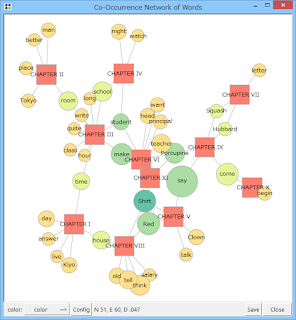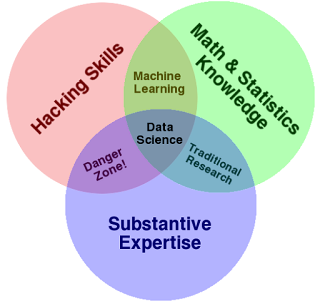Extract Data from Twitter and Format of Twitter Tweet
After describing the steps to analyse data in Twitter, here goes the code to extract data from Twitter. Before you proceed with the code below. Perform following steps
#-------------------------------------------------------------------------------
# Name: module2
# Purpose:
#
# Author: Muskan
#
# Created: 10-06-2015
# Copyright: (c) Muskan 2015
# Licence: <your licence>
#-------------------------------------------------------------------------------
from tweepy import Stream
from tweepy import OAuthHandler
from tweepy.streaming import StreamListener
def main():
pass
if __name__ == '__main__':
main()
ckey = 'your consumer key'
csecret = 'your consumer secret'
atoken = 'your access token'
asecret ='your consumer secret'
class listener(StreamListener):
def on_data(self, data):
print data
return True
def on_error(self, status):
print status
auth = OAuthHandler(ckey, csecret)
auth.set_access_token(atoken,asecret)
twitterStream = Stream(auth,listener())
twitterStream.filter(track=["\"location\"=\"Chandigarh\""])
- Download and Install Python
- Download and Install Tweepy
- Download and Install Requests (if required)
- Register application at https://dev.twitter.com/appshttps://dev.twitter.com/apps
Data extraction Code
# Name: module2
# Purpose:
#
# Author: Muskan
#
# Created: 10-06-2015
# Copyright: (c) Muskan 2015
# Licence: <your licence>
#-------------------------------------------------------------------------------
from tweepy import Stream
from tweepy import OAuthHandler
from tweepy.streaming import StreamListener
def main():
pass
if __name__ == '__main__':
main()
ckey = 'your consumer key'
csecret = 'your consumer secret'
atoken = 'your access token'
asecret ='your consumer secret'
class listener(StreamListener):
def on_data(self, data):
print data
return True
def on_error(self, status):
print status
auth = OAuthHandler(ckey, csecret)
auth.set_access_token(atoken,asecret)
twitterStream = Stream(auth,listener())
twitterStream.filter(track=["\"location\"=\"Chandigarh\""])
Format of Twitter Data
You will get data in the following format:
{
"created_at": "Thu Jun 11
09:31:03 +0000 2015",
"id": 608929425472626700,
"id_str":
"608929425472626688",
"text": "XXXXXXXXXXXXXXXXXXTEXTXXXXXXXXXXXXXXXXXXXX",
"source": "<a
href=\"http://dlvr.it\"
rel=\"nofollow\">dlvr.it</a>",
"truncated": false,
"in_reply_to_status_id": null,
"in_reply_to_status_id_str":
null,
"in_reply_to_user_id": null,
"in_reply_to_user_id_str": null,
"in_reply_to_screen_name": null,
"user": {
"id": 1205763398,
"id_str":
"1205763398",
"name":
"WalterBrianna",
"screen_name":
"WalterBrianna1",
"location": "",
"url": null,
"description": null,
"protected": false,
"verified": false,
"followers_count": 131,
"friends_count": 2,
"listed_count": 14,
"favourites_count": 0,
"statuses_count": 116804,
"created_at": "Thu Feb
21 19:09:36 +0000 2013",
"utc_offset": 7200,
"time_zone":
"Pretoria",
"geo_enabled": false,
"lang": "en",
"contributors_enabled":
false,
"is_translator": false,
"profile_background_color":
"C0DEED",
"profile_background_image_url": "http://abs.twimg.com/images/themes/theme1/bg.png",
"profile_background_image_url_https":
"https://abs.twimg.com/images/themes/theme1/bg.png",
"profile_background_tile":
false,
"profile_link_color":
"0084B4",
"profile_sidebar_border_color":
"C0DEED",
"profile_sidebar_fill_color":
"DDEEF6",
"profile_text_color":
"333333",
"profile_use_background_image": true,
"profile_image_url":
"http://pbs.twimg.com/profile_images/3304904615/f057106eb323b476e9ef1f56b1790d0a_normal.jpeg",
"profile_image_url_https":
"https://pbs.twimg.com/profile_images/3304904615/f057106eb323b476e9ef1f56b1790d0a_normal.jpeg",
"default_profile": true,
"default_profile_image":
false,
"following": null,
"follow_request_sent": null,
"notifications": null
},
"geo": null,
"coordinates": null,
"place": null,
"contributors": null,
"retweet_count": 0,
"favorite_count": 0,
"entities": {
"hashtags": [],
"trends": [],
"urls": [],
"user_mentions": [],
"symbols": []
},
"favorited": false,
"retweeted": false,
"possibly_sensitive": false,
"filter_level": "low",
"lang": "en",
"timestamp_ms":
"1434015063051"
}



Comments
Post a Comment